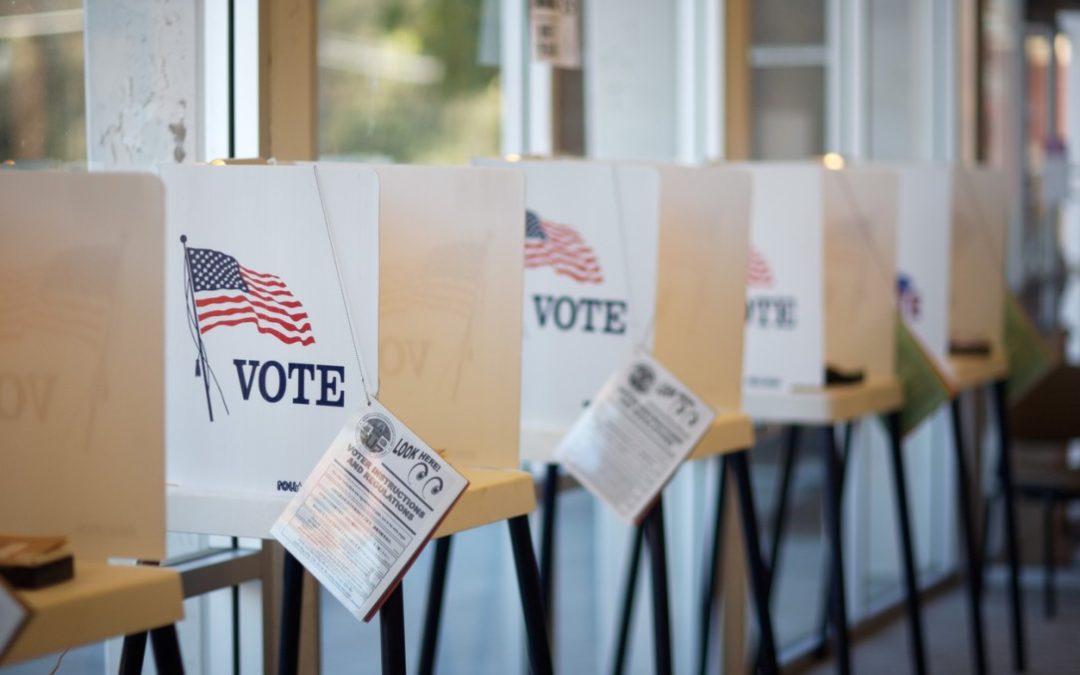Americans vote inside schools and churches. We vote inside libraries, fire stations, stores, and private buildings. These places are fraught with physical barriers. Ordinary citizens staff polling places, volunteering their time. They are trained to answer questions and provide assistance to voters during the voting process. There are inconsistencies throughout our nation as to the type and style of the ballot itself, as technology has not caught up to the election process. The right to participate in our democracy is one of the most sacred and fundamental rights afforded to Americans by our Constitution. For our disabled neighbors, however, the voting process may be intimidating. And for many, physical barriers may make participation in this civic event impossible.
According to the Centers for Disease Control and Prevention, 1 in 4 adults, or 26% of the American adult population is living with a disability. The US Election Assistance Commission reports that there are 35 million Americans with disabilities eligible to vote. According to the US Department of Justice, Civil Rights Division, only 27% of polling places were accessible to persons with disabilities in the 2008 election. Turnout among disabled voters declined in the subsequent elections in 2010, 2012, and in 2016. During the midterm elections in 2018, voter turnout saw huge jumps in every group, including people with disabilities. Turnout for that group was at 49.3%, or some 14.3 million people with disabilities voting. (https://time.com/5622652/disability-voter-turnout/2020). This turnout number, however, is below the rate of similar people without disabilities. While there are many factors that impact voter turnout, the inaccessibility of polling places impacts persons with disabilities above all other groups, affecting persons in virtually every demographic, with leanings in every political direction.
The Help America Vote Act (HAVA) was passed in 2002, to make reforms to the voting process following the controversial 2000 presidential election. HAVA provided federal funding to states for them to implement and improve upon a statewide voter registration system. The Act requires there be at least one voting machine per polling place to allow voters with disabilities to vote privately and independently.
The Americans with Disabilities Act (ADA) is the civil rights law that ensures that all persons are treated equally in all aspects of life. Under Title II of the ADA, state and local governments, which are “public entities,” must ensure that people with disabilities have a full and equal opportunity to vote. Absentee ballots are insufficient. Access to a community polling place ensures the equality under the ADA. There voters can interact with neighbors, candidates, and ask questions and receive assistance from trained poll workers. The ADA regulations were supplemented in 2010 with the Standards to Accessible Design, then in 2016 an ADA Checklist for Polling Places was created. The Justice Department publishes several other excellent resources for solving problems with accessibility at polling places, often on a temporary basis, and can be accessed at www.ada.gov.
Indeed, it may not be obvious to poll workers the many barriers that may face a person with a disability to be able to vote in a dignified and private manner, from the moment of arrival, until the vote is cast. One machine at each polling place that is accessible and private, as required by HAVA, is certainly a start. But, for voters with invisible disabilities whose disability should remain private, using that one machine may be a deterrent. For others, the inability to stand on a long line for that one machine may mean no access at all.
Long before a polling place is open for election day, officials setting up the facility need to evaluate the physical accessibility of the location. If that location does not comply with the requirements of the ADA 2016 Checklist, or modifications cannot be made, an alternative polling place should be chosen. The Checklist is designed to be used by the volunteer poll worker, and evaluations of the facilities are easily made with simple tools listed at www.ada.gov, available from local hardware stores.
Parking: there must a certain number of accessible spaces, including those for vans, with specified widths of spaces. Signage with the International Symbol of Accessibility is required, as are level, firm, stable, and slip resistant spaces.
Passenger Drop-Off Locations: one accessible passenger drop-off area is required, either with no curb or a curb ramp to the accessible entrance.
Accessible Routes: from the accessible parking area, passenger drop-off site, sidewalks/walkways, and public transportation stops, there need to be accessible routes of a specific width, near the general circulation path. Once inside, there must be an accessible route from the entrance, through the hallways and other rooms into the voting area, without abrupt changes in level, steps, high thresholds or steep walkways. Appropriate signage is needed if the accessible route is in a location different than the general public’s path.
Ramps: all ramps, interior and exterior, must meet the requirements of the ADA for slope, width, landings, handrails and edge protection. Carrying, such as with a wheelchair, is not an acceptable option. It is dangerous and degrading for the person being carried, and does not allow the voter to have independent access, as required by the ADA.
Protruding Objects: for persons with vision loss, who use a cane, only objects located 27 inches or lower from the ground are detectable. If an object is higher, the ADA has specifications for how far it may protrude into the path, as well as suggestions to make the object detectable. Stairs must also be protected so that persons will not hit their heads on the underside. This is true for all routes into the voting location, not just accessible ones.
Building Entrance: each polling place must have one accessible entrance, 32 inches wide. Door hardware must be easily useable with one hand, and there may be no high thresholds. The door is to be unlocked while the polling place is open, and be marked with signage.
Lifts and Elevators: if the voting area is on a different level than the entrance, there must be an independently operable elevator or lift, with a door wide enough for wheelchairs and mobility devices. The controls must be operable without tight grasping, pinching, or twisting, and be located no higher than 48 inches.
Voting Area: the voting area itself must have an accessible entrance. It must have adequate space for circulation and maneuvering for check-in, and to access voting stations or machines. The voting area must have enough clearance for the voter to use all equipment and be no more than 48 inches high. Tables must have knee and toe clearance.
Voters wishing to inquire about the accessibility of their polling place may contact their local boards of election directly. Many state and local government web sites include information about voter rights and accessibility. There are also many organizations and resources on voter accessibility, including: U.S. Election Assistance Commission (www.eac.gov); American Association of Persons with Disabilities Rev Up Campaign (https://www.aapd.com/advocacy/voting/), and; The Disability Visibility Project (https://disabilityvisibilityproject.com/tag/crip-the-vote/).
The ADA does not list specifications for accessible ballots, or the actual voting stations or machines. Nor does it address voter registration requirements. Also important to an informed voting process is the ability for all voters to access the information being shared by candidates. At state and national levels, it would be the rare candidate who does not have a web site. The accessibility of those web sites should also be considered. These issues will be discussed in a forthcoming article.


